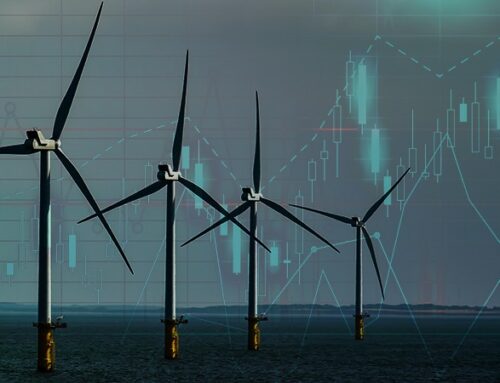In this next post in my series on the critical minerals required for the energy transition, I look at more of the essential components of batteries: graphite and manganese.
Graphite is an often over-looked part of the battery supply chain
Carbon is one of earth’s most abundant and versatile elements, and is known for its ability to conduct electricity due to the delocalised electrons in its structure, high thermal stability (it has the highest specific energy of all materials), and lubricating properties. It is commonly used as a lubricant, in electrodes for batteries and fuel cells, in supercapacitors, in nuclear reactors and solar panels, in the production of crucibles, in pencil “leads,” and as a material for high-temperature applications as in the aerospace industry. It is also used in automotive components, inks and coatings, paints, high strength composites, lubricants, seals, brake linings and grease, brushes for electrical motors, drilling fluids, steel pipes, tubing, fire retardants and many evolving electronic applications.

Historically, the graphite market has been dominated by steelmaking and refractories, but this is expected to be overtaken by the demand for lithium-ion batteries in the coming years. Graphite is critical to the design of battery anodes, with each battery requiring a lot of graphite. By weight, graphite is one of the largest components of an EV battery, accounting for 20-30%. An average plug-in EV contains over 50 kg of graphite.
Energy transition demand for graphite is expected to grow between 750% and 2,500% by 2040, relative to 2020 levels, with demand from the battery sector forecast to increase by 1,400% between 2020 and 2050. A graphite shortage later this decade is expected, as growing demand will outstrip the expected supply from all known projects. Analysts estimate that by 2030, it will take 5 to 6 million metric tons of graphite per year to fill lithium-ion battery demand – roughly four times the 1.3 million metric tons mined globally in 2022. In its highest demand projection, the US Department of Energy forecasts that global graphite demand could be more than eight times current production by 2035.
Graphite occurs naturally on earth but can also be manufactured synthetically. Natural graphite is primarily mined in China, India, Brazil, Mexico and the Ukraine, both underground and in open pits. China dominates the graphite market, mining 67% of the world’s natural graphite, and producing 79% of the world’s anode material. It controls 99% of spherical graphite production.

“Flexible” graphite – also known as “expanded” graphite or “exfoliated” graphite – is produced from purified natural graphite flakes which are separated using flotation to remove impurities and dried using coal furnaces. After this the graphite is spheronised, during which the flakes are transported to another facility and run through dozens of mills to produce a spherical shape. At that point, the graphite is good enough for use in pencils.
For anode quality graphite, the particles undergo chemical leaching, involving acids such as hydrofluoric, hydrochloric, and nitric acids, to purge impurities. Alkaline treatment with reagents such as quicklime neutralises residual acidic components. The outcome is a carbon content surpassing 99.95%, rendering it suitable for lithium-ion battery anode materials. The purified spherical graphite particles are then coated with a substance such as high softening point pitch which involves blasting the particles in a furnace for about 15 hours at 1,300oC. This enhances the performance and stability of the graphite anode within lithium-ion batteries.
The production of synthetic graphite is highly complex but provides the ability to modify its properties to best fit the applications for which it is made. Synthetic graphite is formed from two raw materials: a carbon carrier that is as pure as possible, usually petroleum coke left over from oil production, and pitch as a binder. The two raw materials are mixed and heated for multiple weeks at 1,000 oC to form a homogeneous mass. This is then processed and refined in complex high-temperature processes (up to 3,000 oC for several days) which force randomly ordered carbon atoms to straighten into a neat hexagonal lattice. The exact processes vary depending on the desired properties and type of the synthetic graphite being produced. The heating steps are typically carried out in open pit furnaces with large amounts of electricity needed to maintain heat.
Most battery anode technologies use a blend of natural spherical graphite and synthetic graphite. However, synthetic graphite anode production can be over four times more carbon intensive than natural graphite anode production, due to its high energy requirement, and use of fossil fuels as a feedstock. It is also expensive. The production process in China, which dominates the market, if particularly energy intensive, and since the energy generally comes from coal, it also involves high carbon emissions, and cannot be treated as sustainable under increasingly strict environmental, social, and governance norms across the EU and elsewhere.
The introduction of the carbon border tax and the EU Taxonomy for sustainable finance, will cause issues for European EV producers sourcing their synthetic graphite from China, and since China dominates the market, they have little choice but to continue to do so. The production of synthetic graphite also causes the release of both impurities in the raw materials, such as sulphur and nitrogen, as well as particles of the raw materials themselves, during the carbonisation process.
China has also from time to time restricted the export of processed graphite, either for geopolitical reasons or in order to prioritise domestic consumption. There have also been supply disruptions as a result of electricity curtailment – in times of electricity shortages, supplies to large industrial consumers are curtailed in order to protect the domestic market.
Natural flake graphite offers an alternative that is cheaper to produce, less energy-intensive, and has a better environmental footprint than synthetic graphite. However, as with other forms of mining, graphite extraction can lead to de-forestation, habitat degradation, and water, air and soil contamination. The processing of natural graphite is both highly energy intensive and involves the use of multiple toxic substances.
China’s position as a major exporter of natural flake graphite is declining as output of high quality flake is falling, meaning China is increasingly sourcing natural graphite from overseas mines. It became a net importer in 2019.
Battery makers are exploring alternatives to the use of pure graphite, focusing on ways of incorporating silicon into anode design, since silicon can bind to more ions than graphite thereby storing more energy in the battery. Silicon and other materials could be used as lithium battery anodes, but according to the US Department of Energy, complete substitution is unlikely due to technological challenges and performance concerns. Industry analysts are currently forecasting an anode mix that is increasingly turning to silicon, but not in a significant enough way to dampen the demand trend for graphite.
Manganese is abundant but processing capacity is severely limited
Manganese is a common ferrous metal which constitutes roughly 0.1% of the earth’s crust, making it the 12th most abundant element. Pure manganese is extremely brittle and is not found as a free element in nature, but in other minerals and in combination with iron. According to the Australian Department for Energy and Mining, there are over 300 minerals that contain manganese compounds. By far the most versatile and economically significant are the manganese oxides, psilomelane, cryptomelane, pyrolusite, and wad (manganiferous earth). Manganese nodules are small, layered rocks mostly made up of iron oxide and manganese, which are often found in large quantities and contain valuable metals such as cobalt, copper or nickel in addition to manganese.
Manganese has also long been used in glass-making. Egyptian and Roman glassmakers used manganese compounds to either add or remove colour to/from glass. The use as “glassmakers’ soap” continued through the Middle Ages through to modern times. Today, manganese is widely used in steelmaking where it improves strength, workability, and resistance to wear; and in lithium-ion batteries. Manganese oxide is used as an oxidising agent, a rubber additive to improve curing, in glassmaking, fertilisers, and ceramics. Manganese sulphate can be used as a fungicide.
Batteries are the largest non-alloy market for manganese, accounting for 2 – 3% of current global manganese consumption. In batteries, manganese, usually in the form of manganese dioxide and sulphate, is primarily used in the cathode where it acts as a stabilising component which is critical to battery safety. Manganese also increases energy density while decreasing the combustibility of battery packs. Global car makers including Tesla, Volkswagen, Stellantis, and Renault have announced moves to batteries with high manganese content. However, steelmaking still accounts for 90% of manganese demand (making it an important component in windfarms and other transition infrastructure).

The manganese market is expected to grow steadily at 3% per year through 2030. China consumes 65% of the global output of manganese ore with 16% produced domestically and the rest (half of world production) imported. Europe currently imports 100% of its manganese requirements.
Analysts expect that emerging uses of manganese will collide with established uses at some point in the next few years creating a significant increase in demand, since manganese not only provides physical benefits to batteries, it also reduces their cost. CPM Group forecasts a 30-fold increase in the use of manganese in EV batteries in the 15 years from 2021 to 2036, which translates to a forecast deficit in 2031 of 475,000 MT manganese equivalent. However, if battery demand continues to grow as expected and no additional projects come to the market, the deficit could reach 1 million MT by 2037.
High grade and high purity or electrolytic manganese supply is expected to be particularly challenging with processing bottleneck with geopolitical elements adding to concerns, with 90% of high purity manganese sulphate processing taking place in China. There are only five projects in the pipeline which could reduce China’s market share between now and 2030. Demand for battery-grade manganese is expected to increase by 15 times from 2020 to 2031 to 1.2 million tonnes per year, according to the Battery Solutions division of E Source, a utilities research firm.
Battery manufacturers have strict limits on the impurity levels they can accept, unlike steelmakers. Demand growth is set to put further pressure on the market as EV demand grows and manufacturers increasingly seek to replace expensive cobalt with its ethical concerns with cheaper and more ESG-friendly manganese. In 2021 cobalt was on average 17 times more expensive than manganese, rising to 23 times in 2022. Further demand growth could come from the market for lithium-iron-phosphate (“LFP”) batteries, where developers are working on replacing the iron with manganese to give the batteries higher energy density and make them more desirable in EVs.

More than 25 million tons of manganese ore are mined every year, the most important of which is pyrolusite. About 80% of the known world manganese resources are in South Africa. Other important manganese deposits are in Ukraine, Australia, India, China, Gabon, and Brazil.
Manganese is primarily extracted from open-cast mines, using explosives and excavators. There are also several underground manganese mines (mostly in South Africa, but also in India, Mexico, and some other locations). Underground operations use block-caving, room-and-pillar, modified cut-and-fill or longwall mining methods. Manganese ores generally contain 25 – 45% manganese, mostly in oxide (or hydroxide) and carbonate minerals.
Pure manganese is produced by hydrometallurgical and electrolytic processes, while ferromanganese and silicomanganese are produced by the smelting of ores in a blast furnace or, more commonly, in an electric furnace.
For the production of pure manganese, after mining, ore is crushed and screened, and split into various particle size fractions ranging from fines (under 6mm) to lump ore and concentrates (between 6mm and 75mm) in a magnetic separator. Crushed and screened ore may be concentrated by washing, sink-float, jigging, tabling, flotation, dense media separation and high intensity magnetic separation to produce a saleable concentrate. Silicon waste is typically removed through flotation separation, and clays and other contaminants are washed out. The specifications of the resulting concentrates vary depending on the nature of the ore and the target market. Different grades of ore are blended according to required specifications prior to crushing.
Carbonate manganese ores may be calcined (a thermal treatment process to bring about thermal decomposition, phase transition, or removal of volatile fractions). Higher-quality fines may be agglomerated, nodulised, sintered or pelletised (sintering, called “rittage”, is the process of forming a solid mass of material through heat and pressure without melting to the point of liquefaction). Lower-quality ores, fines and complex fine-grained ores may be flotated. In cases where manganese is associated with other metals, hydrometallurgical processes such as solvent extraction are used, sometimes after roasting or sintering to improve solubility (roasting is a metallurgical process where ore is converted into its oxide by heating it below its melting point in the presence of excess air, during which moisture and non-metallic impurities are released in the form of volatile gases).

In the production of ferromanganese, after crushing, the manganese ore is mixed with iron ore and carbon and then reduced either in a blast furnace or in an electric arc furnace. The resulting ferromanganese has a manganese content of 30 – 80%.
As with other critical minerals, the extraction and processing of manganese creates adverse environmental and human health impacts. Manganese contamination in domestic water supplies is likely close to mines, which can cause impaired cognitive and developmental delays in young children, mental health conditions and a condition called manganism, which is similar to Parkinson’s Disease. Water contamination also leads to higher manganese levels in fish, which enter the human food chain, contributing to the exposure of local populations.
The mining industry uses significant amounts of water in its operations and manganese mining also directly decreases the amount of water available to communities through a process of “de-watering” the natural aquifer system to ensure that open pits do not become flooded. This leads to depletion of groundwater reducing the amount available for extraction from boreholes. A 2017 environmental scoping report commissioned for a prospective manganese mining operation in South Africa found that “groundwater levels would not recover within the 100-year simulation period”. Another South African study in 2017 predicted a low to high risk of a drop in water levels of up to 22 metres that would continue to affect borehole users up to 8.3 km from the mine, even decades after the mine in question ceased operations.
Blasting and crushing activities at the mines propel large amounts of pollutants into the atmosphere with long-term exposure to the dust leading to silicosis, silico-tuberculosis, pulmonary tuberculosis, obstructive airways disease, and occupational asthma. Blasting also causes structural damage to homes, furniture, and other community infrastructure, generally without any compensation from the mines. The blasts are extremely loud and can create measurable ground tremors, causing heightened levels of anxiety, trauma in local communities.
.
As with many of the other minerals critical to the energy transition, graphite and manganese supply chains are largely under Chinese control – China mines 67% of the world’s natural graphite, produces 79% of the world’s anode material, and controls 99% of spherical graphite production, while 90% of high purity manganese sulphate processing takes place in China. Manganese is cheaper than cobalt and more ESG-friendly, but making this substitution relies on access to the necessary supplies, and although it may be less environmentally and socially harmful, it is not without its problems, particularly given its water intensity.
Critical minerals series
Following on from my post about the need to secure critical minerals for the energy transition, in this post I look at copper and aluminium…
Following on from my post about the need to secure critical minerals for the energy transition, in this post I look at copper and aluminium…
Continuing my series on critical minerals, in this post I will look at some of the main metals required for lithium-ion batteries: lithium, cobalt and nickel…
In this final post in my series on minerals critical to the energy transition I look at rare earth metals.










Leave A Comment